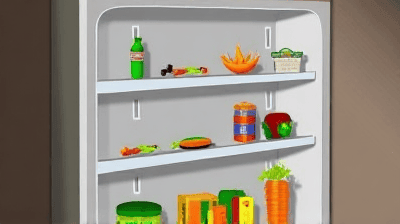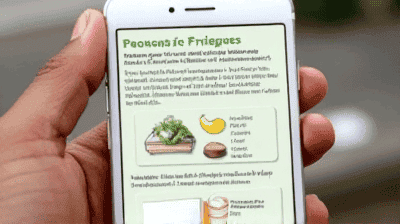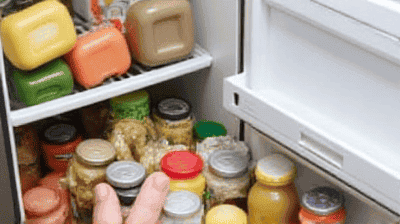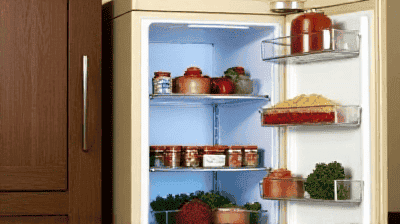
Household food waste is a pressing issue in modern society, with approximately one-third of all food produced globally never being consumed. This waste not only represents significant economic loss but also contributes to environmental challenges, including greenhouse gas emissions and resource depletion. As communities around the world strive to adopt more sustainable practices, innovative solutions such as community fridges and food sharing apps have emerged as effective strategies for tackling household waste. These initiatives leverage technology and local engagement to promote food sharing, enhance food security, and foster a culture of sustainability.
Household food waste refers to edible food that is discarded, thrown away, or allowed to spoil in residential settings. Various factors contribute to this waste, including over-purchasing, improper food storage, lack of awareness about expiration dates, and consumer preferences for appearance over nutritional value.
According to the Food and Agriculture Organization (FAO), about 1.3 billion tons of food is wasted each year, with households accounting for a significant portion of this figure. In developed countries, it is estimated that around 40% of food waste occurs at the consumer level, while in developing nations, much of the waste occurs during the production and distribution stages. This stark contrast underscores the need for tailored solutions to address food waste in various contexts.
The environmental consequences of household food waste are profound. When food waste ends up in landfills, it decomposes anaerobically, producing methane—an exceptionally potent greenhouse gas that contributes significantly to climate change. Furthermore, resources such as water, energy, and labor used in producing food are wasted along with the discarded items. This unnecessary depletion of resources raises concerns about sustainability, food security, and environmental stewardship.

Community fridges are public refrigerators placed in accessible locations where individuals can share surplus food. These fridges serve as a communal resource where community members can donate excess food or take food they need, promoting a culture of sharing and reducing waste.
Community fridges operate on a straightforward principle: they create a space for surplus food to be exchanged. Typically managed by local organizations or volunteers, these fridges are stocked with food items that others may not want or need. Anyone in the community can access these fridges, allowing for a fluid exchange of food resources.
Reduced Food Waste: By providing a platform for sharing surplus food, community fridges help prevent edible items from being discarded. This reduces overall food waste in the community.
Enhanced Food Security: Community fridges can help individuals facing food insecurity gain access to fresh food without stigma. This means that no one in the community goes hungry due to the waste of others.
Fostering Community Connections: Community fridges facilitate connections among neighbors and promote a sense of community. They encourage conversations about food, sustainability, and local solutions to waste.
Awareness and Education: The presence of community fridges can raise awareness of food waste issues and promote discussions about sustainable consumption practices. They serve as educational hubs for the community about reducing waste and food preservation.
Several cities worldwide have successfully implemented community fridges:
New York City: The NYC community fridge initiative has grown significantly, with numerous fridges placed throughout neighborhoods. Local organizations manage the fridges, ensuring they are stocked and maintained, while volunteers help to spread awareness and encourage participation.
Berlin, Germany: Berlin boasts a strong network of community fridges that emphasize solidarity and collective action. Many fridges are often placed in public areas, allowing citizens to share food while reducing waste.
Mexico City, Mexico: Community fridges in Mexico City have emerged as a grassroots response to food waste and insecurity. These fridges offer a practical solution to households needing extra food while fostering local community engagement.
Food sharing apps are digital platforms designed to facilitate the exchange of excess food among individuals and businesses. These apps allow users to connect with others in the community to share surplus food, often for free or at a low cost.
Food sharing apps typically function by allowing users to create profiles where they can indicate their food availability or needs. Users can browse listings of available food items, arrange pickups, and communicate with each other. Many apps include features like geolocation to help users find nearby food-sharing opportunities.
Convenient Access to Surplus Food: Food sharing apps offer a user-friendly interface to access surplus food, making it easier for individuals to find what they need while reducing waste.
Building Community: Similar to community fridges, food sharing apps also foster connections among users. Sharing food encourages community building and promotes interactions between neighbors.
Reducing Carbon Footprint: By redirecting surplus food away from landfills, food sharing apps help decrease methane emissions associated with food waste and minimize the carbon footprint of households.
Resource Optimization: These apps contribute to a more efficient use of resources by ensuring that food produced is consumed rather than discarded, promoting more sustainable food systems.
Several food sharing apps have gained prominence around the world:
Too Good To Go: This app allows consumers to purchase surplus meals from restaurants and stores at a discounted price. Users can browse participating establishments, select their meals, and pick them up during designated hours.
Olio: Olio connects neighbors and local businesses to share surplus food through its app. Users can list available food items and arrange exchanges, promoting community interaction and sustainability.
Food Rescue US: This app facilitates food donations from businesses, like restaurants and grocery stores, to local nonprofits and food banks. By connecting donors with organizations in need, it helps rescue food from waste.
Community fridges and food sharing apps complement each other in tackling household waste. While community fridges provide physical locations for sharing food, food sharing apps extend the reach by connecting individuals beyond the immediate vicinity. Together, they create a multifaceted approach to food waste reduction.
Both initiatives empower local communities to take ownership of their food systems. They promote collaboration among residents, businesses, and organizations, fostering collective solutions to reduce waste and enhance food security.
By integrating community fridges and food sharing apps into local food systems, cities can move towards a more sustainable and resilient approach to food management. These solutions encourage responsible consumption, reduce waste generated from household levels, and create connections within communities.

To maximize their impact, community fridges and food sharing apps require active participation from community members. Without sufficient awareness of these initiatives, their effectiveness may be limited. Educating the public about the importance of food sharing and waste reduction is critical.
Food safety is a legitimate concern for shared food initiatives. Community fridges and apps must implement guidelines to ensure that food shared is safe for consumption. Regular monitoring, signage on proper food handling, and community education are essential in addressing these concerns.
Effective management is crucial for the success of community fridges. Volunteer or organizational support is needed to ensure that fridges are regularly cleaned, stocked, and monitored for freshness. Similarly, food sharing apps need to establish proper guidelines for users to facilitate seamless exchanges and maintain quality.
Food sharing apps depend on technology and internet access. In communities without adequate digital infrastructure, individuals may be excluded from participating in the solution. Addressing the digital divide is essential in creating truly inclusive systems that encourage waste reduction.
Local regulations regarding food safety and sharing can pose challenges. For instance, liability concerns may deter businesses from donating food or participating in food sharing initiatives. Clear legal frameworks and policies supporting food sharing can mitigate these challenges and encourage participation.
In several cities, community fridges have shown tangible results in reducing food waste. For example, in Melbourne, Australia, the community fridge movement gained momentum, with numerous fridges popping up across neighborhoods. Not only do these fridges provide fresh food to those in need, but they also have become focal points for community engagement and education about food sustainability.
Too Good To Go has expanded significantly across Europe and North America, rescuing millions of meals from waste. By incentivizing restaurants and stores to participate, the app has made food-sharing simple and appealing. Users appreciate the opportunity to rescue delicious meals at reduced prices while simultaneously contributing to sustainability efforts.
Olio's growth in urban areas like London showcases the power of community engagement in food sharing. The app has witnessed a significant rise in user involvement, with neighborhoods participating in local food-sharing events that promote sustainability and education around waste reduction.

As technology continues to advance, there are opportunities for further integration between community fridges and food sharing apps. Incorporating IoT (Internet of Things) capabilities into fridges can allow for real-time inventory tracking and alerts for users, enhancing the efficiency of food sharing.
For community fridges and food sharing apps to thrive, supportive policies and regulations must be established. Advocacy efforts on local, national, and international levels can create an enabling environment for these initiatives, promoting their adoption and scaling.
The successful models of community fridges and food sharing apps can be replicated and adapted in other communities. Collaboration between different cities can facilitate knowledge sharing, resource pooling, and collaboration on food-sharing initiatives.
Community fridges and food sharing apps should prioritize community-centric approaches that emphasize local culture, food preferences, and values. This helps create solutions that are more relevant and accepted within specific contexts.
Food waste is a multifaceted challenge that requires innovative and collaborative solutions. Community fridges and food sharing apps provide practical tools for individuals and communities to combat household waste while increasing food security and fostering connections among neighbors.
Together, these initiatives empower individuals to be proactive in reducing waste, highlight the importance of sustainability in everyday life, and promote a food-sharing culture that values generosity and collaboration.
As we move towards a more sustainable food system, it is crucial to embrace and support community-driven efforts that engage all members of society. By harnessing technology alongside grassroots initiatives, we can contribute to a more sustainable future that ensures food is valued, shared, and consumed, rather than wasted.